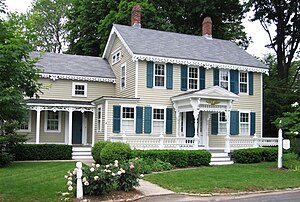Given the weak economy and housing market—and the uncertainty of a recovery—the company is using technology to cut costs and offset depressed revenue.
Corcoran has already found more than a half million dollars in savings by using WegoWise to analyze and compare utility costs among its buildings and other properties in the same markets. The comparison has pointed out buildings with poor water and fuel efficiency and created a strong incentive to modernize, by giving property managers the numbers they need to know when efficiency investments—like new toilets or heating systems — will pay for themselves. “Rents were dropping and we wanted to maintain the bottom line–utilities are a big chunk of that,” said Peter Mahoney, development associate at Corcoran & Co, who manages new construction for the firm.
The software is an example of how an inexpensive cloud-based tool (WegoWise charges between $5 and $20 per building) can help CIOs capture efficiencies that business managers might not otherwise have time to identify. WegoWise says overall it already tracks 500,000 utility bills across 10,000 buildings.
| Picture of the "Gingerbread House" in Essex, Connecticut, USA (Photo credit: Wikipedia) |
WegoWise pulled heating and water bills from utility companies, displaying the data on charts inside the Web-based application. The tool allowed the company to compare its utility costs to that of other local properties, and to assess how the energy efficiency of its own buildings compared to one another. Mahoney says until that point the company was unable to conduct such an analysis.
In late 2010, soon after the firm began to test at several properties, Corcoran identified large inefficiencies at one of its Boston-area sites. One of the property’s eight buildings was using 1 million more gallons of water per year for its 75 units than other buildings on the same property. When company engineers inspected toilets around the building they found them to have poorly fitting flappers – the rubber seal in the tank that controls flushing – which caused extra water to leak.
The company replaced those flappers and also found that replacing 500 toilets with more water-efficient models, across the property, could save money. Those changes, made in 2011, have created $80,000 in annual savings, and the investment will pay for itself in about one year, Corcoran says.
Mahoney says those improvements will raise the value of the property by $1 million, helping the company refinance to raise capital for new projects, as the housing market starts to improve.
WegoWise also helped the company calculate how much money it would save by switching from oil to natural gas, and to estimate how long it would take for such an investment to pay for itself.
“It would have taken a lot more work to do this analysis on our own and we may not have come to that realization,” Mahoney said.
Last September, Corcoran switched one property to gas at a cost of around $850,000. Corcoran used the software to analyze data on the heating costs for other buildings in the area, and determined that the savings from the new natural gas heating system will offset the investment in about two years.
“When you see the comparisons something clicks and you start to do the analysis of how you could bring down fuel costs,” Mahoney said.
The company already uses the software to track 20 properties. By the end of this year, Corcoran will track most of its 50 properties, Mahoney said.
Taken from: http://blogs.wsj.com/cio/2012/08/13/real-estate-manager-uses-web-based-tool-to-reduce-utility-costs/






No comments:
Post a Comment